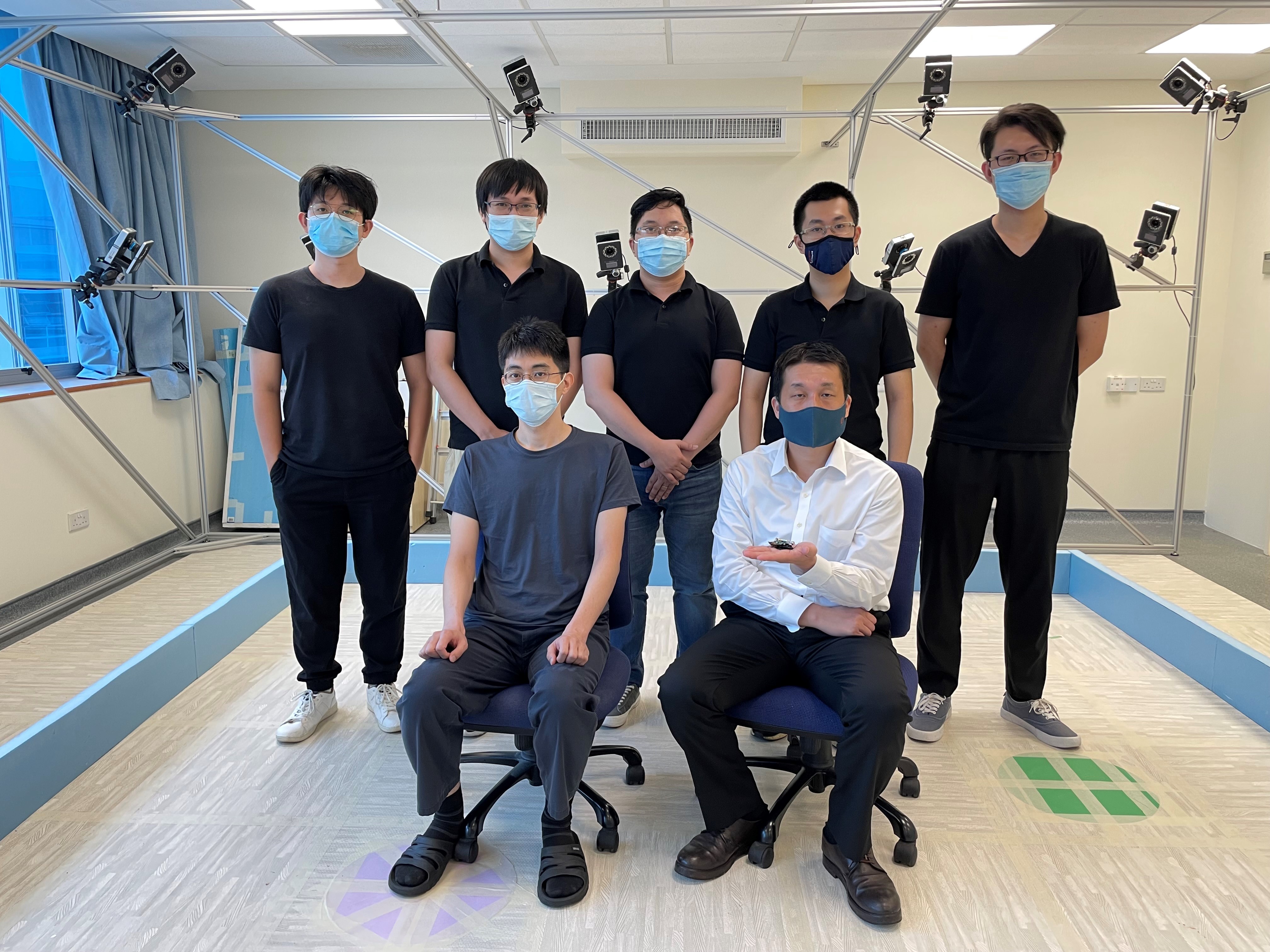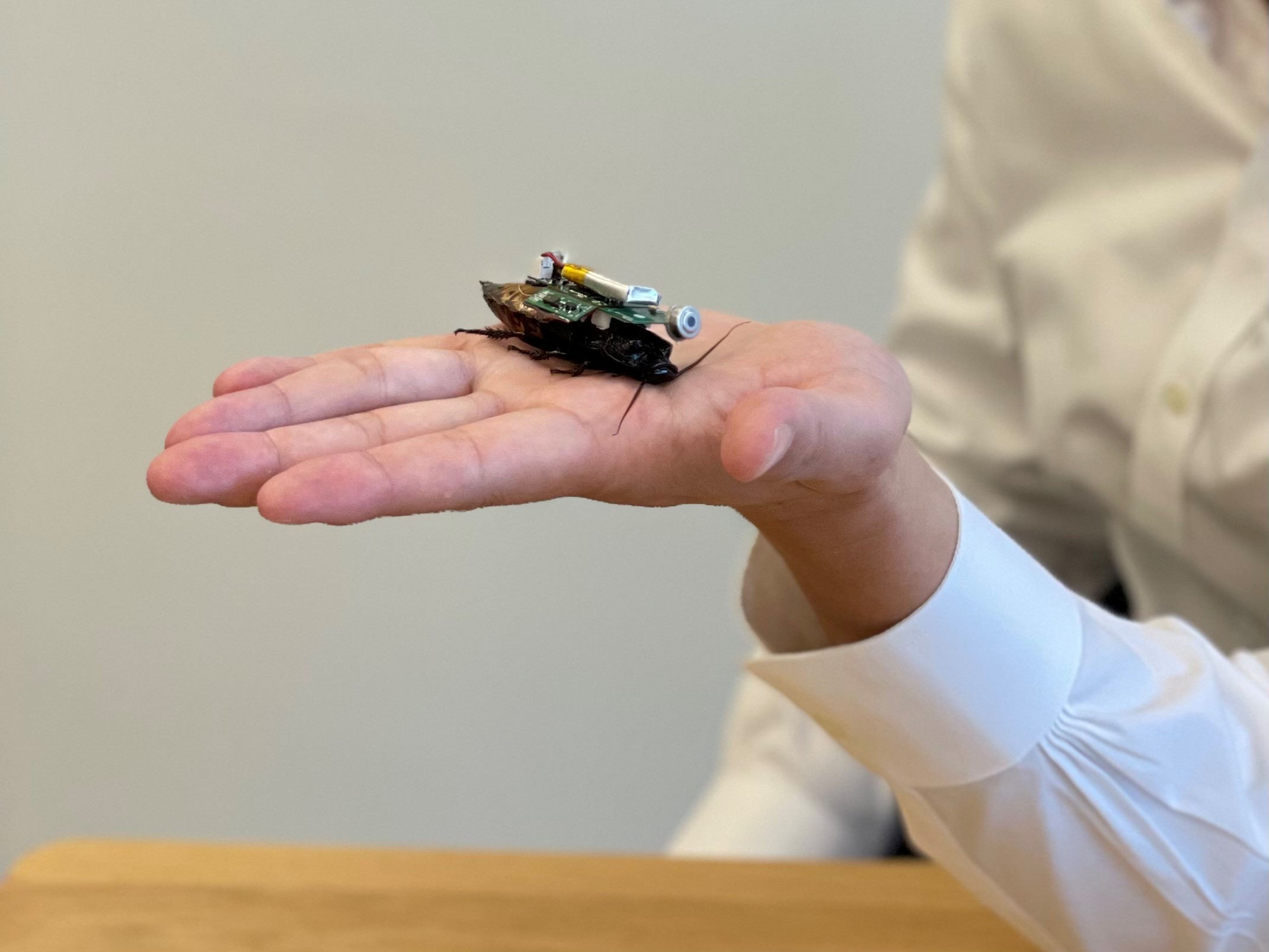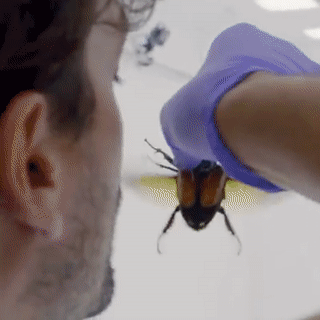Follow us on Telegram for the latest updates: https://t.me/mothershipsg
Those with katsaridaphobia might feel quite conflicted about being rescued by a cockroach, but it's a scenario not too far off from reality.
You can thank Associate Professor Hirotaka Sato's team at Nanyang Technological University's (NTU) School of Mechanical and Aerospace Engineering, Home Team Science and Technology Agency (HTX), and engineering company Klass Engineering and Solutions for that.
 Photo by HTX
Photo by HTX
Cockroach with a backpack
Each cockroach carries a "backpack" comprising a battery and a tiny chip, Ong Ka Hing, Deputy Director of Ground Robotics at HTX, told Mothership.
 Photo by HTX
Photo by HTX
The chip contains a suite of devices, including an infrared camera, a microphone, environmental sensors, and navigation sensors.
Cockroaches were chosen as they are ideal for search and rescue missions, due to their resilience and nimbleness.
When deployed to disaster sites, they can reach spaces that may be otherwise dangerous or inaccessible to human rescuers.
"The accessibility of the insect was also a consideration – cockroaches are available to obtain at scale, making it suitable for the possibility of mass deployment in future," Ong added.
The species used—Madagascar hissing cockroaches—is different from the German and American cockroaches haunting our houses.
Each Madagascar hissing cockroach averages 6cm in length (slightly longer than the house pests), providing a "sufficiently large frame" for the backpack to be fitted on.
The insect's direction can be controlled by researchers via its backpack, which stimulates its neuromuscular sites with electrical signals.
Something like this:
 Via MOTHERBOARD on Facebook.
Via MOTHERBOARD on Facebook.
On the other hand, the infrared camera is able to detect human presence through thermal images and report the results in real time via wireless communication.
According to The Straits Times (ST), the infrared camera can help rescuers tell human and non-human subjects apart, with 87 per cent accuracy.
Researchers estimate releasing 500 cockroaches for an area of five square kilometres.
Installing the backpack
The cockroach is first knocked out with carbon dioxide before the wax on its back is scraped off.
During the few minutes that it is unconscious, two electrodes and the backpack are attached to its back.
The backpacks can be disassembled after each mission, Ong said.
The team is currently working to optimise the backpack’s chip and sensor, and hopes to automate the process of fitting the backpack on cockroaches.
They aim to deploy the cyborg cockroaches in the field within the next five years.
Sato said,
“Singapore was the first country to dispatch their rescue team to Japan when the big earthquake hit on March 11, 2011. Since then, I have been seriously motivated to use my technology to contribute to Singapore's rescue mission.”
 Sato and a cyborg cockroach. Photo by HTX
Sato and a cyborg cockroach. Photo by HTX
Previous experiment with beetles
Sato's team has also previously carried out the same experiment with beetles, to be similarly used in search and rescue missions.
The associate professor explained that such technology is also an alternative to remote-controlled drones, which are much more costly.
You can watch a video of it here:
Top image via HTX
If you like what you read, follow us on Facebook, Instagram, Twitter and Telegram to get the latest updates.
